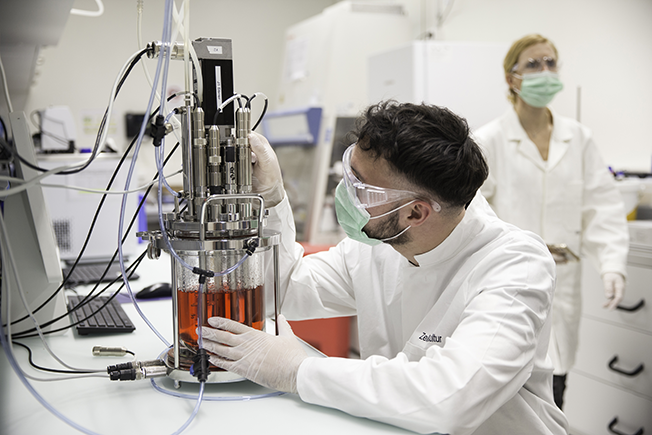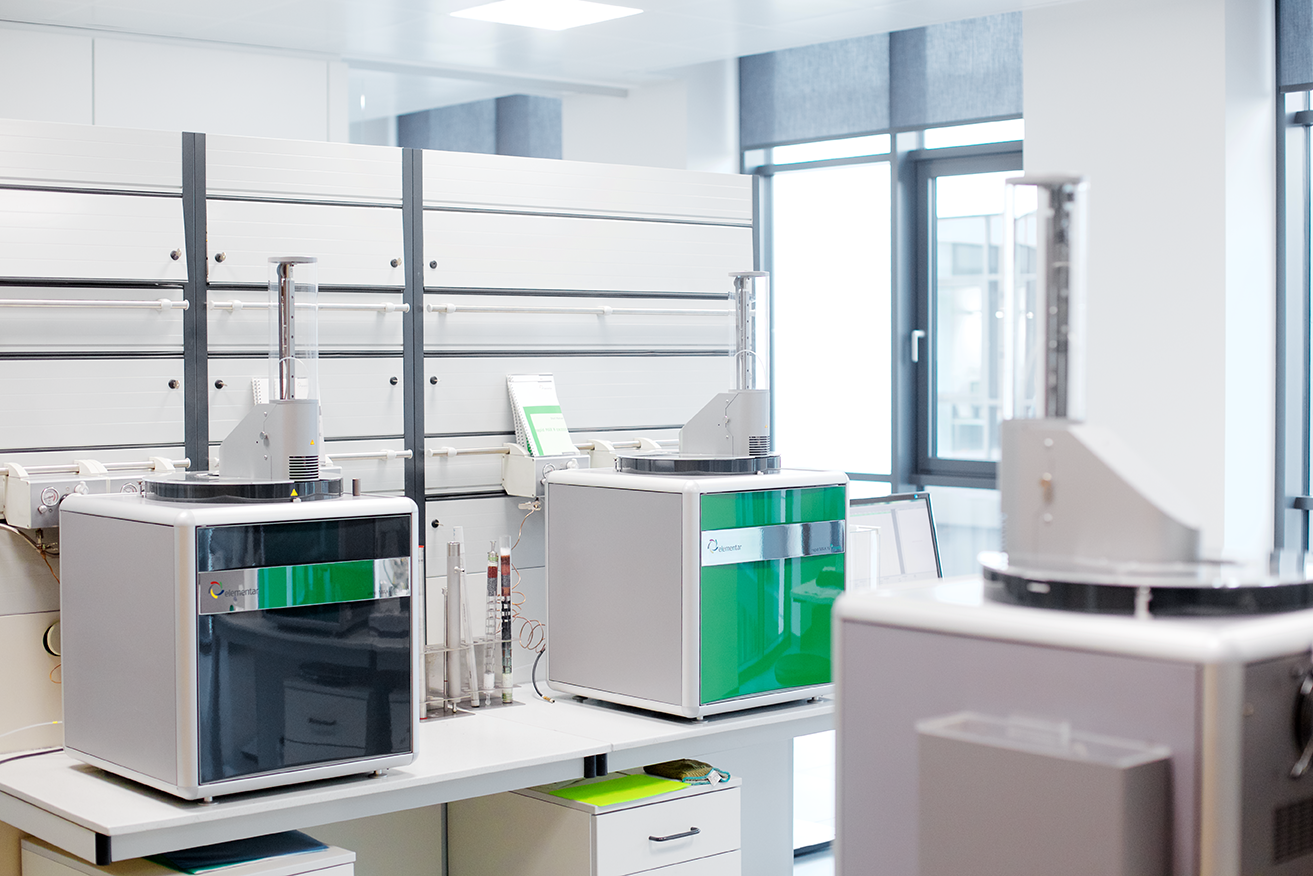

High-performance line for vegetarian and vegan cocktail products in alginate casings
Handtmann, an expert in the field of processing, weighs up the handling and automation options for producers of vegan sausages, while offering some tips for achieving optimum product quality

When it comes to the production of vegan sausages, the same process technology from conventional sausage production can be used. And similar to meat sausages, vegan sausages can either have a coarse or a fine structure. Coarse variants consist of coarsely ground ingredients such as protein and polysaccharide texturates, and emulsion gels stabilized by different binding agents. Different inserts or particles can be used as imitation fat.
In terms of the production method used, it’s comparable to that of vegan mince: texturate is hydrated and mixed with binding agents and other ingredients after a grinding step.
For fine vegan sausages, though, the majority of products are made using emulsions, which are also suitable for the production of cold cuts or spreads, depending on the recipe. Emulsions are frequently in the production of coarse vegan sausages as binding or gelling agents.
Vegan sausages are increasingly being offered as standalone products, too, with the only similarity to the real meat variant being the shape. In everything else they differ: color, appearance, texture, and flavor. This very heterogeneous product group is usually based on plant-based preparations such as tofu, seitan, mushroom or vegetable, although the product characteristics and production methods for the initial product are manifold.
In addition to the functional ingredients, oil, flavoring and colorants are mixed with water, mostly replacing a portion of the water with ice. Low temperatures are necessary to activate certain functional ingredients (e.g. methyl cellulose) and low product temperatures, but are beneficial in terms of improved microbial stability and a firmer consistency.

Mixing it up
The preparation of a stable emulsion requires suitable mixing technology. A homogeneous, high specific input of energy is necessary in the mixing process to achieve fine distribution of the oil droplets. At the same time, the mixing process should be achievable under vacuum to minimize the impact of air. Classic cutters, modern mixing and emulsifying systems such as the Inotec VarioMix ultra-fine grinders and automatic processing units from Handtmann are especially suitable.
After preparing an emulsion as a recipe base, various coarse ingredients (e.g. texturates, gels, vegetable pieces) often have to mixed into the product. Such inserts need to be mixed very gently and efficiently to preserve the chunkiness of the ingredients. With its two separately driven mixing shafts without central shaft and the vacuum option, the Handtmann VarioMix, for example, offers optimum conditions for both emulsifying with a high energy input and mixing gently and with great efficiency.
After producing the initial vegan product, the second step is for the product to be portioned.
The production of plant-based emulsions for vegan sausages is similar to that of conventional sausage meat. The meat is finely ground, while proteins are released that bind water and fat. Subsequent thermal treatment leads to denaturation and hence gelatinization of the sausage products, which ensures the typical ‘sausage consistency’. Similarly, in the production of vegan sausages, water, proteins, fat, hydrocolloids, salt, spices, flavorings, and colorants are used to produce an emulsion that gels after heating.
Other stabilization systems exist that gel cold and do not require a heating step. The goal of the mixing process is to produce a stable, homogeneous emulsion of a consistency suitable for the subsequent portioning process. This is achieved by adding ingredients with an emulsifier effect and thickening agents. In the portioning step, the vegan sausage product is either filled into a sausage casing or dosed into containers. In both instances, process solutions involving vacuum fillers (VF) in combination with the appropriate auxiliary devices are applied. One processing option is Handtmann’s ConPro system for the continuous production of sausages in alginate casing.
Continuous processing
Handtmann’s ConPro technology (‘ConPro’ stands for continuous process) offers the possibility of producing a variety of vegan or vegetarian sausage products in a vegan alginate casing in a continuous co-extrusion process. Alginate is a long-chain carbohydrate, extracted from brown algae. Alginate gels can be produced across a wide range of temperatures and pH levels, they are insoluble in water, heat-stable and can be blanched, smoked and dried.
There are slight nuances between ConPro systems for cut sausages and the ConProLink system for linked sausages. In the ConPro system, the product is pressed through the central filling tube of a co-extrusion head by a vacuum filler and exits the other end as a strand.
At the same time, the pasty sodium alginate solution is applied to the sausage strand as a thin film through an annular gap which is positioned above the central filling tube.

Casings
In the next step, the alginate-encased strand passes through a fixing bath, during which the alginate film gels, in doing so creating a sausage strand with firm alginate casing. Subsequently, this sausage strand can then be hung on a hanging unit or cut into defined strings of sausages and individual portions in an integrated separating unit. The ends of the products can either be cut straight or also be shaped during the cutting process by means of a forming cut, so creating rounded sausage ends.
Products with a diameter of 8-32mm and a product length starting at 40mm are possible with the system. It is available in two performance level versions. The smaller entry-level model is suitable for producers who have just made the step into ConPro production. If more production capacity is required, there is no need to buy a new system; production output can be increased via an upgrade. The KLSH 153 ConPro system has a modular design and can be enhanced in line with the specific requirements, and they can also be integrated into automation processes.
Equipped with the multi-forming and separating unit, the KLSH 153 ConPro system turns into a high-performance line for vegan or vegetarian cocktail products at up to 3,000 sausages per minute. In a continuous, endless production process, sausages in the calibre range of 13-28mm and with portion lengths of 40-60mm can be produced. Precisely separated and formed product ends are guaranteed, even at maximum speed. The cocktail products can then be transferred directly to freezer or frying tunnels.
ConPro systems are based on a process of co-extrusion and allow the continuous production of sausages in the alginate casing
Post-treatment, further processing and packaging
As a rule, after portioning, the sausage portions undergo thermal treatment to increase the shelf life and, in most cases, to gel the sausage product, before being cooled. Irrespective of the type of sausage casing, linked vegan sausages are usually post-treated after production and hung as a string of sausages. Typical process steps would be smoking, curing or maturing. There are no restrictions as to further processing for these vegan sausages in their alginate casings. The casing can be fried, dried, smoked, deep-fried, cooked, baked and mold-ripened. A targeted adjustment of the heating parameters can yield additional quality gains for products in alginate casings. Prior to packaging, the sausages can be separated using Handtmann’s sausage-separating systems.
If fresh vegan sausage is produced using the Handtmann ConPro or linking systems, it is separated into individual portions and deposited directly into trays by the various Handtmann handling and automation options. And in a final step, the trays are sealed and refrigerated.
For more information about Handtmann's products, please click here
If you have any questions or would like to get in touch with us, please email info@futureofproteinproduction.com


%20ILVO%202.jpg)

.png)

